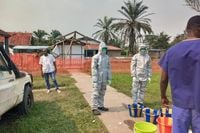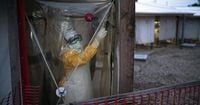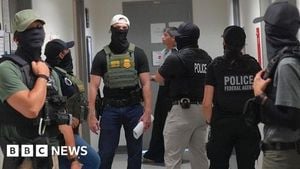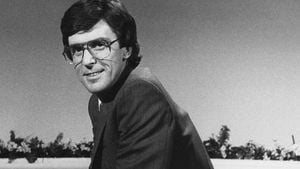In the heart of Kasai province, southern Congo, a race against time is unfolding as health officials and international organizations scramble to contain the region’s first Ebola outbreak in nearly two decades. The World Health Organization (WHO) and Doctors Without Borders (Médecins Sans Frontières, or MSF) are at the forefront of this battle, confronting daunting logistical and financial obstacles in their efforts to halt the spread of the deadly Zaire strain of the Ebola virus.
The outbreak, officially confirmed on September 4, 2025, has sent shockwaves through the remote province, which lies more than 1,000 kilometers (about 620 miles) from the nation’s capital, Kinshasa. According to the Associated Press, this marks the first Ebola outbreak in Kasai in 18 years, underscoring both the rarity and seriousness of the situation.
By September 11, the Africa Centers for Disease Control and Prevention reported a rapid escalation in suspected cases, jumping from 28 to 68 in just one week, with 16 deaths already recorded. The numbers alone tell a sobering story, but the challenges on the ground add further urgency. Kasai’s poor road networks and limited infrastructure have hindered the delivery of critical supplies and personnel. "We have struggled in the last seven days with access but are collaborating with MONUSCO (U.N. peacekeeping mission in Congo) now," Patrick Otim, WHO’s program area manager, told reporters in Geneva, as cited by the Associated Press.
In a remarkable logistical feat, a United Nations peacekeeping helicopter managed to deliver 400 doses of the Ebola vaccine to the outbreak’s epicenter in the locality of Bulape on September 12. An additional 1,500 doses are being dispatched from Kinshasa to bolster the response. The vaccine’s arrival offers a glimmer of hope, but the scale of the challenge remains immense. “While the WHO and Congolese authorities have ramped up efforts to have a full scale response on the ground, we need to be able to pay for the operations,” Otim emphasized, highlighting the acute need for funding.
Financial constraints loom large over the response. The WHO estimates that the cost of tackling the outbreak over the next three months will reach $20 million, while Congo’s own national response plan projects a staggering $78 million. Recent U.S. funding cuts have exacerbated the situation—whereas the U.S. Agency for International Development (USAID) provided up to $11.5 million for Ebola efforts in Africa as recently as 2021, that support has now diminished, leaving a significant gap in resources.
Health workers, already on the front lines, are at particular risk. At least four confirmed Ebola cases have been identified among healthcare providers. Mathias Mossoko, Congo’s Ebola response coordinator in Bulape, made it clear where immediate priorities lie: “For now, our priority is to vaccinate health care workers. Given the number of cases and deaths among health care providers, protecting these front line workers is essential to ensure the population receives adequate care.”
Tracing and containing the virus is a monumental task, but officials have made noteworthy progress. As of September 12, over 600 contacts—representing 94% of those linked to suspected cases—have been traced, with only one confirmed to be infected. Mossoko expressed cautious optimism, noting, “At this stage, it is not yet appropriate to declare a public health emergency.” He also reassured that there is minimal risk of the disease spreading to other provinces, though vigilance remains high.
Still, the situation is far from under control. The most recent confirmed Ebola case was found 70 kilometers (about 43 miles) from Bulape, but still within Kasai province. "Our worry is if we get cases in the other health zone, we need to expand and it will be resource-intensive," Otim warned, reflecting concerns about the potential for the outbreak to grow beyond its current boundaries.
On the ground, Doctors Without Borders has played a critical role in supporting the response. The organization established an Ebola treatment center at Bulape hospital on September 7, just days after the outbreak was confirmed. Their teams have reinforced triage protocols, supplied essential medicines and personal protective equipment, and provided training in infection prevention, control, and symptomatic care. “We helped reinforce triage protocols, supplied essential medicines and personal protective equipment, and conducted training in infection prevention and control and symptomatic care,” Brice de le Vingne, MSF’s emergency coordinator, told the Associated Press.
The rapid deployment of a treatment center in such a remote area is no small feat. The photo provided by MSF, showing men standing outside the new Ebola treatment center in Bulape, captures both the gravity and the urgency of the situation. According to MSF, ongoing efforts are focused not only on treating those already infected, but also on preventing further spread of the disease in a region where healthcare resources are stretched perilously thin.
The outbreak’s epicenter in Bulape is emblematic of the larger challenges faced by health authorities in Congo. Remote, difficult to access, and lacking in basic infrastructure, Bulape and its surrounding areas present a logistical nightmare for any emergency response. The reliance on helicopters for vaccine delivery is a testament to both the severity of the outbreak and the creativity required to get ahead of the virus.
Funding, or the lack thereof, remains a persistent concern. With the WHO and Congo’s government facing a multi-million-dollar shortfall, appeals for international assistance are likely to intensify in the coming weeks. The memory of past outbreaks, including the devastating West African Ebola epidemic of 2014-2016, looms large, serving as a stark reminder of what can happen when resources and coordination fall short.
Yet, there are reasons for cautious optimism. The high rate of contact tracing, the swift vaccination of healthcare workers, and the rapid establishment of treatment centers all signal a more proactive and coordinated response than in some previous outbreaks. The collaboration between WHO, MSF, MONUSCO, and local authorities demonstrates a commitment to learning from the past and acting decisively in the present.
For the people of Kasai, the coming weeks will be critical. The success or failure of the current response will hinge on continued international support, the resilience of local healthcare workers, and the ability of organizations to adapt to ever-changing circumstances on the ground. As the world watches, the fight against Ebola in southern Congo is a stark reminder of the persistent threats posed by infectious diseases—and the extraordinary efforts required to keep them at bay.





